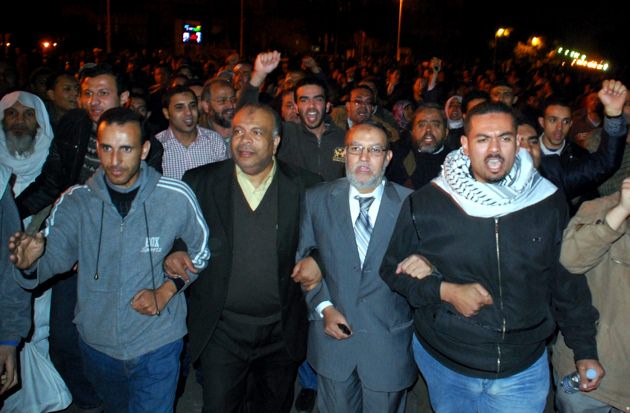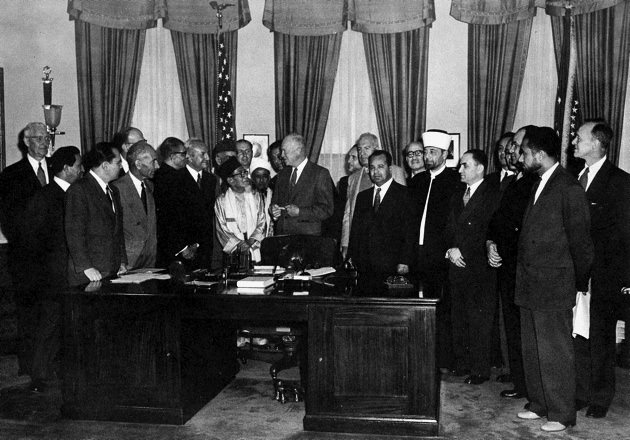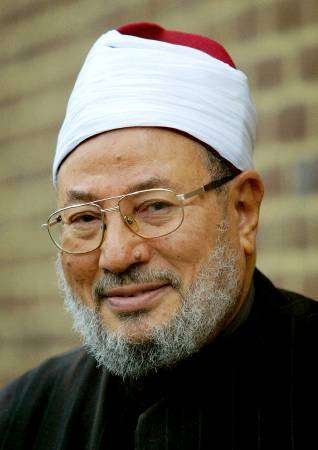As US-backed strongmen around North Africa and the Middle East are being toppled or shaken by popular protests, Washington is grappling with a crucial foreign-policy issue: how to deal with the powerful but opaque Muslim Brotherhood. In Egypt, the Brotherhood has taken an increasingly forceful part in the protests, issuing a statement Thursday calling for Mubarak’s immediate resignation. And though it is far from clear what role the Brotherhood would have should Mubarak step down, the Egyptian president has been claiming it will take over. In any case, the movement is likely to be a major player in any transitional government.
Journalists and pundits are already weighing in with advice on the strengths and dangers of this 83-year-old Islamist movement, whose various national branches are the most potent opposition force in virtually all of these countries. Some wonder how the Brotherhood will treat Israel, or if it really has renounced violence. Most—including the Obama administration —seem to think that it is a movement the West can do business with, even if the White House denies formal contacts.
If this discussion evokes a sense of déjà vu, this is because over the past sixty years we have had it many times before, with almost identical outcomes. Since the 1950s, the United States has secretly struck up alliances with the Brotherhood or its offshoots on issues as diverse as fighting communism and calming tensions among European Muslims. And if we look to history, we can see a familiar pattern: each time, US leaders have decided that the Brotherhood could be useful and tried to bend it to America’s goals, and each time, maybe not surprisingly, the only party that clearly has benefited has been the Brotherhood.
How can Americans be unaware of this history? Credit a mixture of wishful thinking and a national obsession with secrecy, which has shrouded the US government’s extensive dealings with the Brotherhood.
Consider President Eisenhower. In 1953, the year before the Brotherhood was outlawed by Nasser, a covert US propaganda program headed by the US Information Agency brought over three dozen Islamic scholars and civic leaders mostly from Muslim countries for what officially was an academic conference at Princeton University. The real reason behind the meeting was an effort to impress the visitors with America’s spiritual and moral strength, since it was thought that they could influence Muslims’ popular opinion better than their ossified rulers. The ultimate goal was to promote an anti-Communist agenda in these newly independent countries, many of which had Muslim majorities.
One of the leaders, according to Eisenhower’s appointment book, was “The Honorable Saeed Ramahdan, Delegate of the Muslim Brothers.”* The person in question (in more standard romanization, Said Ramadan), was the son-in-law of the Brotherhood’s founder and at the time widely described as the group’s “foreign minister.” (He was also the father of the controversial Swiss scholar of Islam, Tariq Ramadan.)
Eisenhower officials knew what they were doing. In the battle against communism, they figured that religion was a force that US could make use of—the Soviet Union was atheist, while the United States supported religious freedom. Central Intelligence Agency analyses of Said Ramadan were quite blunt, calling him a “Phalangist” and a “fascist interested in the grouping of individuals for power.” But the White House went ahead and invited him anyway.
By the end of the decade, the CIA was overtly backing Ramadan. While it’s too simple to call him a US agent, in the 1950s and 1960s the United States supported him as he took over a mosque in Munich, kicking out local Muslims to build what would become one of the Brotherhood’s most important centers—a refuge for the beleaguered group during its decades in the wilderness. In the end, the US didn’t reap much for its efforts, as Ramadan was more interested in spreading his Islamist agenda than fighting communism. In later years, he supported the Iranian revolution and likely aided the flight of a pro-Teheran activist who murdered one of the Shah’s diplomats in Washington.
Cooperation ebbed and flowed. During the Vietnam War, US attention was focused elsewhere but with the start of the Soviet war in Afghanistan, interest in cultivating Islamists picked up again. That period of backing the mujahedeen— some of whom morphed into al-Qaeda—is well-known, but Washington continued to flirt with Islamists, and especially the Brotherhood.
In the years after the September 11 attacks, the United States initially went after the Brotherhood, declaring many of its key members to be backers of terrorism. But by Bush’s second term, the US was losing two wars in the Muslim world and facing hostile Muslim minorities in Germany, France, and other European countries, where the Brotherhood had established an influential presence. The US quietly changed its position.
Advertisement
The Bush administration devised a strategy to establish close relations with Muslim groups in Europe that were ideologically close to the Brotherhood, figuring that it could be an interlocutor in dealing with more radical groups, such as the home-grown extremists in Paris, London and Hamburg. And, as in the 1950s, government officials wanted to project an image to the Muslim world that Washington was close to western-based Islamists. So starting in 2005, the State Department launched an effort to woo the Brotherhood. In 2006, for example, it organized a conference in Brussels between these European Muslim Brothers and American Muslims, such as the Islamic Society of North America, who are considered close to the Brotherhood. All of this was backed by CIA analyses, with one from 2006 saying the Brotherhood featured “impressive internal dynamism, organization, and media savvy.” Despite the concerns of western allies that supporting the Brotherhood in Europe was too risky, the CIA pushed for cooperation. As for the Obama administration, it carried over some of the people on the Bush team who had helped devise this strategy.
Why the enduring interest in the Brotherhood? Since its founding in 1928 by the Egyptian schoolteacher and imam Hassan al-Banna, the Brotherhood has managed to voice the aspirations of the Muslim world’s downtrodden and often confused middle class. It explained their backwardness in an interesting mixture of fundamentalism and fascism (or reactionary politics and xenophobia): today’s Muslims aren’t good enough Muslims and must return to the true spirit of the Koran. Foreigners, especially Jews, are part of a vast conspiracy to oppress Muslims. This message was—and still is—delivered through a modern, political party-like structure, that includes women’s groups, youth clubs, publications and electronic media, and, at times, paramilitary wings. It has also given birth to many of the more violent strains of radical Islamism, from Hamas to al-Qaeda, although many of such groups now find the Brotherhood too conventional. Little wonder that the Brotherhood, for all its troubling aspects, is interesting to western policy makers eager to gain influence in this strategic part of the world.
But the Brotherhood has been a tricky partner. In countries where it aspires to join the political mainstream, it renounces the use of violence locally. Hence the Muslim Brotherhood in Egypt says it no longer seeks to overthrow the regime violently—although its members there think nothing of calling for Israel’s destruction. In Egypt, the Brotherhood also says it wants religious courts to enforce shariah, but at times has also said that secular courts could have final say. This isn’t to suggest that its moderation is just for show, but it’s fair to say that the Brotherhood has only partially embraced the values of democracy and pluralism.
The group’s most powerful cleric, the Qatar-based Youssef Qaradawi, epitomizes this bifurcated worldview. He says women should be allowed to work and that in some countries, Muslims may hold mortgages (which are based on interest, a taboo for fundamentalists). But Qaradawi advocates the stoning of homosexuals and the murder of Israeli children—because they will grow up and could serve as soldiers.
Qaradawi is hardly an outlier. In past years, he has often been mentioned as a candidate to be the Egyptian branch’s top leader. He is very likely the most influential cleric in the Muslim world—on Friday, for example, thousands of Egyptian protesters in Tahrir Square listened to a broadcast of his sermon. He has also declared those demonstrators who have died defying the government to be martyrs.
That is an indication of the Brotherhood’s growing influence in the wave of protests around the region. In Egypt, the Brotherhood, after a slow start, has become a key player in the anti-government coalition; on Thursday, the new vice president, Omar Suleiman, invited the Brotherhood for talks. In Jordan, where the group is legal, King Abdullah met with the Brotherhood for the first time in a decade. And in Tunis, the Islamist opposition leader Rachid Ghanouchi, who has been a pillar of the Brotherhood’s European network, recently returned home from his London exile.
All of this points to the biggest difference between then and now. Half a century ago, the West chose to make use of the Brotherhood for short-term tactical gain, later backing many of the authoritarian governments that were also trying to wipe out the group. Now, with those governments tottering, the West has little choice; after decades of oppression, it is the Brotherhood, with its mixture of age-old fundamentalism and modern political methods, that is left standing.
Advertisement
* The appointment book and details of Ramadan’s visit are in the Eisenhower presidential archives in Abilene, Kansas. See my book A Mosque in Munich, pp. 116-119, for details of the visit. On the use of the Brotherhood post-9/11, see pp 222-228.




